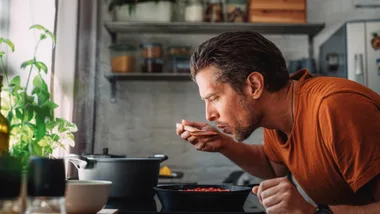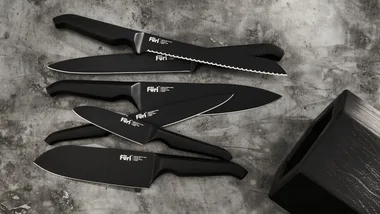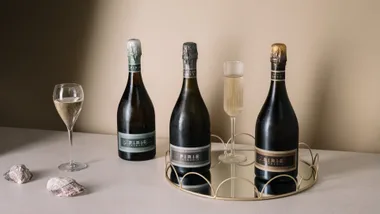Alberto Alessi talks to Maggie Scardifield about timeless design, poetry and his signature chicken.
At Cascina Eugenia, Alberto Alessi’s home at Lake Orta in Italy’s north-west, the dining table is set with a dozen chairs, each designed by a different architect. It’s a scene that reflects the Alessi philosophy – the Italian design firm is famous for an eclectic catalogue born of collaborations with designers from all over the world.
Alberto’s grandfather Giovanni established Alessi in 1921 in Omegna, not far from Lake Orta, as an artisanal cold-forming metal factory that produced brass, copper and nickel tableware. In the ’30s, under the management of Alberto’s father, Carlo, the factory began moving towards mass production; when Alberto joined the company in 1970, he shifted Alessi’s focus to high-end international design collaborations.
He isn’t a designer himself, but rather sees himself as a father to “design personalities”. Under his direction multiple voices have become a part of the Alessi DNA: Ettore Sottsass, Marc Newson, Philippe Starck and Frank Gehry among hundreds of others.
“It was shocking at the time, but it was very important for Italian design to oxygenate,” he says.
Gourmet Traveller spoke with Alessi when he was in Australia recently to give a lecture presented by the Melbourne Movement design collective and Monash University Art, Design and Architecture.
What does good design mean to Alessi?
It has a lot to do with the Italian way of looking at design where poetry is fundamental to being a good designer. The most important thing I ask myself when taking on someone new is whether or not he or she is a poet. It’s not about trends; it’s always about personality.
Alessi works with a number of Australian designers. How did this come about?
After Italy, Australia has the second largest number of Alessi designers. It happened spontaneously.
We started in the early ’90s with Susan Cohn from Melbourne [who designed the Cohncave Bowl], and with Marc Newson [Strelka Cutlery and the Stavros bottle opener among other products]. Australians are pragmatic and practical. Perhaps being so far from the epicentre of design, they have a special vision that helps them to make products that are very different. We have 12 Australians in production now.
Despite shifting trends, pieces such as Michael Graves’ 9093 kettle and Philippe Starck’s Juicy Salif citrus-squeezer are still popular today.
Why do you think that is?
There has been lots of discussion as to why an object or a person can become an icon. At least in part, it’s because they’re representing the true deep spirit of their period and at the same time, they’re timeless. Graves’ kettle is an exceptional example of the mid-’80s. A good designer couldn’t design a kettle like his today. It would be wrong for the people – or just uninteresting.
What makes a great kitchen?
In my case it’s the central place of the entire house; it’s like a theatre. I need a kitchen where I can play – somewhere where my friends can be in front of me and I can talk and joke with them as I cook. The most important thing, I insist, is to always invite good guests, too. And good wine helps.
And you make your own wine.
In 2000, I bought an old farm on Lake Orta that had been completely abandoned since the ’40s. We did the complete replanting and the restoration of all the buildings. Now I live in the middle of the vineyard and from the kitchen I can go directly into the cellars. The wine is called La Signora Eugenia e il Passero Solitario [Madam Eugenia and the Lonely Sparrow] and is bottled in a Da Vinci-inspired bottle I designed myself: the Leo bottle. Actually, it’s the only design I’ve made by myself in my lifetime.
Do you have a signature dish?
My pollo brucia culo, “arse-burning chicken”. Mainly it’s made with Mexican dried black peppers, peas to absorb the heat, and lots of sweet wine, preferably from my vineyard. Fantastico. Benissimo.
 David Hahn
David Hahn




-(10).png?resize=380%2C285)



